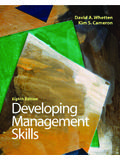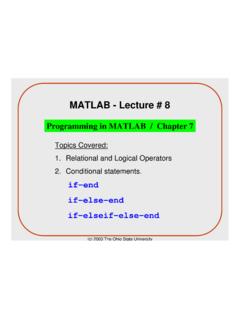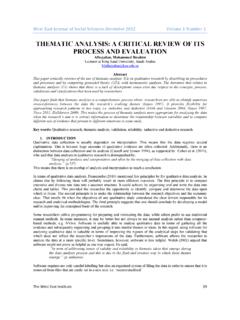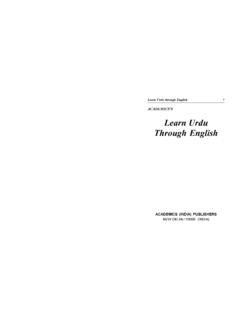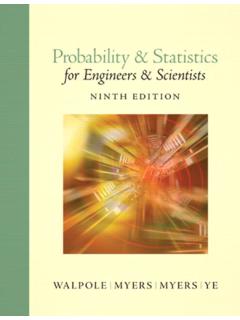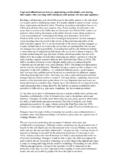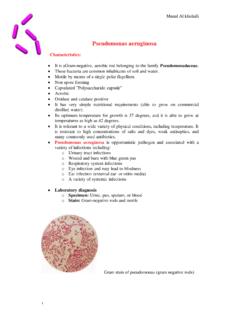Transcription of INTRODUCTION TO STATISTICS - KSU
1 INTRODUCTION TOSTATISTICSMADE EASYSECOND EDITIONiProf. Dr. Hamid Al-Oklah Dr. Said Titi Mr. Tareq AlodatiiCONTENTsIntroductionChapter 1 Basic Concepts in and Type of and Experimental Studies17 Chapter2 Organizing and Graphing and Graphing Qualitative and Graphing Quantitative Data47 Chapter3 Numerical Descriptive of Central of of Plot112 Chapter4 Basic Concepts in Probability and Counting , Outcome, and Sample Multiplication Rules and Conditional and Counting Rules172 Chapter5 Random Variables and Their Probability Distribution of Discrete random The Mean and Standard Deviation for Discrete random to the Random Variable194 References (211) /Appendix A - Statistical Tables (213) /Dictionary (231).iiiThe First EditionThe main objective of this book is to provide students of Preparatory Year Deanship, at King Saud University in Saudi Arabia, a textbook in STATISTICS . In fact, we found that most of the university STATISTICS books are almost too much pages long, contain more material than can reasonably be covered in one term, and they are not readable for most of our students.
2 In addition, part of the material covered in these books is redundant and unnecessary. One of the most important features of this book is its readability, even for students who have weak reading statistical concepts. The book is written in a way that in-duces students to read and understand. The sentences used are short and clear. The concepts are presented in a student-friendly manner using an intuitive approach, and the examples are carefully chosen to reinforce chapter opens with a list of objectives so that an instructor can tell at a glance what topics are covered in the chapter. In addition, students get an idea about the type of skills they should have acquired after studying the each section, there are a number of examples that have been worked out in a step-by-step detailed manner. At the end of each section, there is a very carefully chosen set of exercises which cover all skills discussed in the section, and get the students thinking more deep-ly about the mathematics involved.
3 The exercises vary in difficulty and purpose. The reader will notice that the sets of exercises are much shorter than the tra-ditional sets of exhaustive drill and skill questions, which build skill devoid of understanding. In other hand the first three chapters are supported by statistical package SPSS that helps the students to analyze and find the concepts in such chapters. The topics in this book are organized in five chapters. In Chapter one, we introduce the basic concepts in STATISTICS . Chapter two is devoted for organizing and graphing data set, and Chapter three is about numerical descriptive measure. Chapter four is concerned with basic concepts of probability and counting rule, and Chapter five is about random variables and their probability , we would like to thank his Excellency Dr. Nami Al Juhani, Dean of Prepa-Introductionivratory Year at King Saud University, Dr. Abdulmajeed Al-Jeriwi, Vice Dean for Academic Affairs, Dr.
4 Obaid Al Qahtani Chair of Basic Science Department for their continued sup-port and encouragement. Many thanks go to all other faculty members, who helped us dur-ing the writing process; their input made this a much better book. Last, but definitely not least, we would like to thank our families for understanding and patience while writing this , it is pleasure to thanks and regards the co-authors of this book for their non-stopped efforts to reach the point of publishing the book. So, many thanks and respects to Prof. Mohammed Subhi Abu-Saleh, Dr. Sharhabeel Alaidi and Mrs. Dareen Omari for their unlimited useful feedback and for the remarkable touches. We also take this opportunity to express a warm gratitude to Mr. Anas S. Alakhras and Mr. Fadi Hassan for their help in publishing this book. The Authors March 10, 2014vThe Second EditionBased on the directives of the Department of Basic Sciences at the Deanship of the preparatory year in to develop some of the decisions of the books studied by the students of the preparatory year at King Saud University, it has included the development of the book INTRODUCTION to STATISTICS for authors Dr.
5 Said Titi, Khaled Khashan and Mr. Tareq this aim, it formed a committee composed of Prof. Dr. Hamid Owaid Al-Oklah, Dr. Said Titi and Mr. Tareq Alodat , so that the committee review the contants of the book and is interested in developing. In addition to that the design process is Assigned by book has been reviewing in question above by Prof. Dr. Al-Oklah and author Dr. Titi where corrected most of the typos that have been monitored, and corrected some of the concepts, and then added several paragraphs, examples and exercises necessary for the book, and delete others for lack of necessity, and moreover has been included Dictionary (English - Arabic) for most of the scientific terms con-tained in this last we draw thanks to the Deanship of the preparatory year and also to the presidency of the Department of Basic Sciences specially for Dr. Obaid Al Qa-htani Chair of Basic Science Department for their trust in us in the development of this hope from God that we have been successful in our work and God Crown Dr.
6 Hamid Al-OklahDr. Said TitiJune 22, 2015 IntroductionviPREFACES tatistics book covers many statistical fields. Our life is full of events and phenomena that enhance us to study either natural or artificial phenomena could be studied using different fields of science like physics, chemistry, and mathematics. The goal of this book is to connect those concepts with the advanced statistical is used in a variety fields like business and engineering and science. We can sea there are many applications of STATISTICS in those fields, the applications of STATISTICS are many and varied; people encounter them in everyday life, such as in reading newspapers or magazines, listening to the radio, or watching television. Since STATISTICS is used in almost every field of endeavor, the educated individual should be knowledgeable about the vocabulary, concepts, and procedures of 1 Equations and InequalitiesCHAPTER 1 Basic Concepts In StatisticsObjectives1 Understand the role of STATISTICS in real the definition of basic Statistical between descriptive and inferential types of the measurement level for each the basic sample the difference between an observational and experimental an overview about applications using statistical software (SPSS).
7 Basic Concepts in Statistical ConceptsOur life is full of events and phenomena that enhance us to study either natural or artificial phenomena could be studied using different fields one of them is STATISTICS . For example, the applications of STATISTICS are many and varied as follows: -People encounter them in everyday life -Reading newspapers or magazines, -Listening to the radio, or watching television. Since STATISTICS is used in almost every field of endeavor, the educated individual should be knowledgeable about the vocabulary, concepts, and procedures of is a branch of science dealing with collecting, organizing, summarizing, analysing and making decisions from STATISTICS is divided into two main areas, which are descriptive and inferential StatisticsSuppose that a test in STATISTICS course is given to a class at KSU and the test scores for all students are collected, then the test scores for the students are called data set (the definition of this term will be discussed deeper in section ).
8 Usually the data set is very large in the original form and it is not easy to use it to draw a conclusions or to make decisions while it is very easy to draw conclusions from summary tables and diagrams than from such original data. So reducing the data set to form more control by constructing tables, drawing graphs and provide some numerical characteristics for which is a simple definition to introduce descriptive STATISTICS . Descriptive STATISTICS deals with methods for collecting, organizing, and describing data by using tables, graphs, and summary BInferential StatisticsThe set of all elements (observations) of interest in a study is called a population, and the selected numbers of elements from theBasic Concepts In Statistics2 CHAPTER 1 CHAPTER 1 Equations and InequalitiesCHAPTER 1 Basic Concepts In Statisticspopulation is called a sample. In statistical problems we may interest to make a decision and prediction about a population byusing results that obtained from selected samples, for instance we may interest to find the number of absent students at PY on a certain day of a week, to do so, we may select 200 classes from PY and register the number of students that absent on that day, then you can use this information to make a decision.
9 The area of STATISTICS that interest on such decision is referred to inferential STATISTICS deals with methods that use sample results, to help in estimation or make decisions about the During this section, we will clarify the meaning of population, sample, and data. Therefore, the understanding of such terms and the difference between them is very important in learning STATISTICS . For example, if we interest to know the average weights of women visited diet section in a hospital during specified period of time, then all women who visited that section represents the study population is the set of all elements (observations), items, or objects that bring them a common recipe and at least one that will be studied their properties for a particular goal. The components of the population are called individuals or Any collection of things, including a joint gathering recipe at least one to be examined for a particular purpose, called a statistically population (or population as a matter of shortcut).
10 The compo-nents of the population are called individuals or 1a. In a study of the average number of students in secondary schools in Riyadh city, where there are different stages of the students, such as first, second and third secondary, as well as there are male and female, but they all gathered, including prescription study in high school. Therefore, we find that high school students in Riyadh make up a that a population can be a collection of any things, like Ipad set, Books, animals or inanimate, therefore it does not necessary deal with people. 3b. In a study of the evolving condition of the patients in a hospital, where there are many people of different types of diseases, but they all bind them recipe disease, so patients that in the hospital make up a In a study to determine the technical condition of the aircraft of the Gulf Cooperation Council (GCC), where travel aircraft, military training aircraft, and Helicopters.
